Here we are, the end of another month. I, of course, will be taking February 29-31 as days to do things like not drink wine, go on a diet, and exercise regularly. Because I’m just that committed. Let’s look in at my favorite dishes from the meals we served at Casa SaltShaker this last month.
Lamb and Carrot Agnolotti – large agnolotti, the pasta itself tinged orange with carrot juice, filled with a mix of ground lamb and carrot flavored with ginger and shallot. Baked in the oven rather than boiled, giving them a crispy crust – much like baked or toasted ravioli – while regularly brushing them with a glaze made from reduced lamb stock. Over them, a spicy carrot fondue made from finely diced carrots, garlic, pepperoncini, and fennel seeds cooked down slowly in cream and marsala. Loved this dish, as did the guests. One even wrote us a week later from a posh resort where they were staying, saying that it had inspired them to try the lamb ravioli at the resort’s well known and highly rated restaurant, and they weren’t even close to as good as ours. We’ll take it.
Served with Bodega Monteviejo “Festivo” Rosé 2021 (100% Malbec from the Clos de las Siete vineyards)
Fettuccine alle Rigaglie di Pollo – Back in September I did a step by step on this dish, my version of a classic Roman pasta, a ragú made from chicken giblets, tomatoes, carrots, celery, leeks, and white wine. It’s really good. People are always surprised when dishes made from things like giblets and livers and/or other organ meats are delicious, mostly because, I think, they haven’t had them cooked well. I mean, I grew up with chicken giblets, but they were always fried, and more or less fast food; and chicken livers were basically relegated to “chopped liver”. Not that they weren’t good, but they’re just not on the same plane as a dish like this.
Served with Domaine Bousquet Rosé Espumante Orgánico (75% Pinot Noir, 25% Chardonnay, made with the Charmat method)
Salmon and Tuna Causa – Our classic house version of a Peruvian causa as a base – chilled potato puree flavored with lemon, yellow chili, olive oil, and salt. Topped with a salad of diced salmon, tuna, and avocado in a basil, cilantro, ginger, and soy sauce flavored mayo (more of the mayo on the plate as well). Garnished with cilantro and a brunoise of celery and red onion. The whole thing topped with a turmeric and chili lace tuile. Yum! And the first time I’ve made lace tuiles. Kind of fun to watch them form.
Served with Saldungaray “Ventania” Extra Brut, unusual in being from Buenos Aires province, just a bit south of here. 100% Pinot noir.
Sweetbread Caramelle – Easily one of the top five questions I get asked is “where do you get your inspirations from ?” My reply is always something to the effect of “everywhere, everything” – and in this case, I was perusing some of the recipes I’d bookmarked in Pierre Gagnaire’s Reinventing French Cuisine. It’s a beautifully illustrated book, with text that’s evocative, but recipes that are vague, often leaving entire parts or processes of the dishes out, like he didn’t really want to tell people how to make his food. The recipe in question was from his January 1994 menu. Sweetbreads, browned until crusty in butter, served over a green olive, parsley, and butter couscous, and the whole thing drizzled over with an intensely bitter coffee and cardamom butter. It was delicious when I tried it, following what directions there were.
Here, after some experimenting, I’ve done my own reinventing, moving it more Italian. I know that some percentage of you think that couscous is some sort of grain, because I hear that regularly, but it’s actually tiny balls of semolina pasta. I made semolina caramelle, a pasta shape so called because it looks like a wrapped candy. The filling is a sauté of sweetbreads, green olives, shallots, and garlic in butter and olive oil, then mixed with ricotta salata. The sauce is a coffee and black garlic infused panna di cucina. And, it’s finished with some chopped parsley and some drops of our housemade green olive liqueur.
Served with Salentein Rosé Reserva 2022 (100% Syrah)
Now, the sauce brings up something that’s been in the background to address in one of my upcoming pasta posts. So, what better time than here? In Italian, “panna” means cream. But that’s a very general term, and outside of Italy, people often just assume it’s meant as panna di latte, or cream of milk, what we think of as light, heavy, or whipping cream. But when Italians talk about adding cream to dishes, they’re usually talking about panna di cucina, or kitchen cream. And that’s a completely different thing…
Outside of Italy it’s probably not easy to find panna di cucina, unless you live somewhere with a big Italian community and imported goods. But it’s really easy to make and many people make their own anyway, because it’s far cheaper. You take a 3:2 ratio of neutral oil (not olive oil) and milk, plus a good pinch of salt. Make sure the two liquids are really well chilled. Put the three ingredients into a blender, or a container that you can use a stick blender in, and blend on high speed until it’s completely emulsified and thick. That’s the cream Italians are talking about adding to their dishes. It has flavor. It’s far lighter than whipping cream. If you’ve done it right, it doesn’t “break” when it’s cooked like milk and cream often do when they come to a boil. I wouldn’t use it in my coffee. Then again, I drink my coffee black.
There are exceptions – like penne alla vodka, but that was a dish that was “invented” for an international audience, and popularized outside of Italy, so it’s usually made with heavy cream. But it would be interesting to go back and retry the recipe with this – it’d be a little lighter, but also more flavorful, would be my guess.
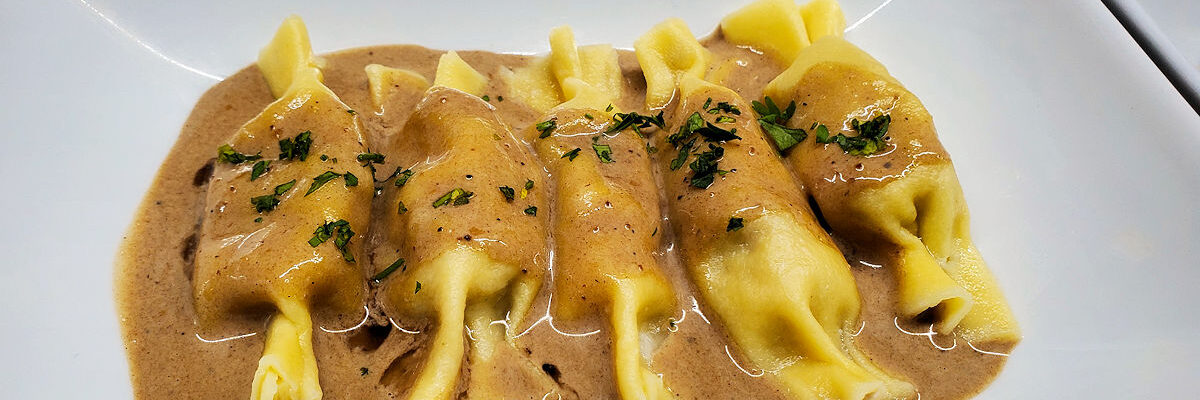
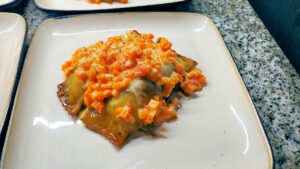
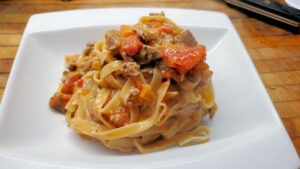
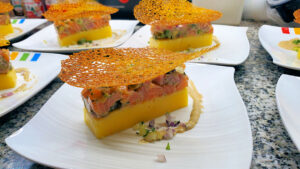
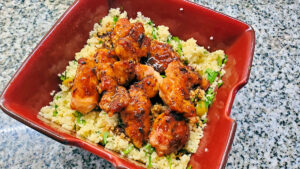
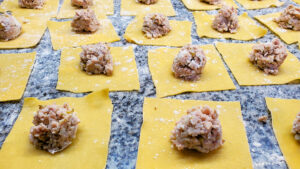
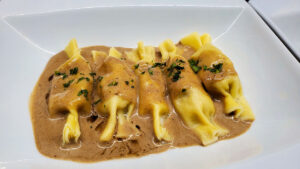
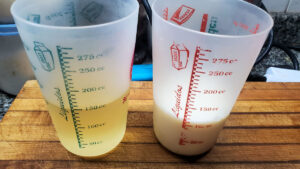
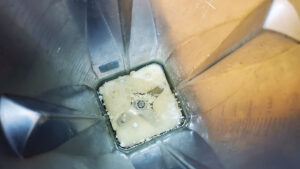
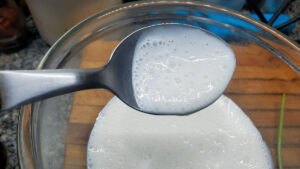
[…] emulsified with some of the pasta water. Spooned over the top a caciocavallo cream – first I had to make panna di cucina then melt the cheese into it and season with salt and white pepper. Atop that, a simple pesto made […]